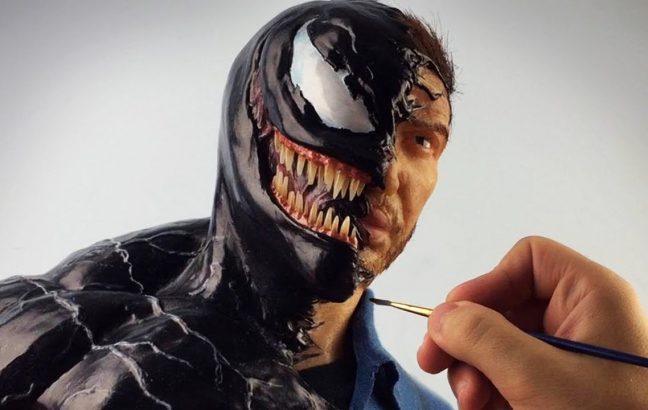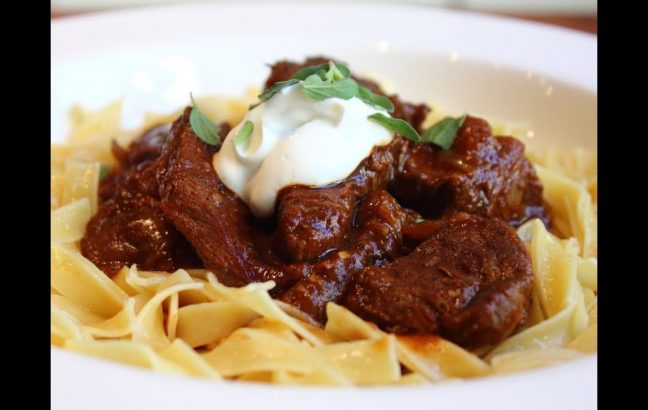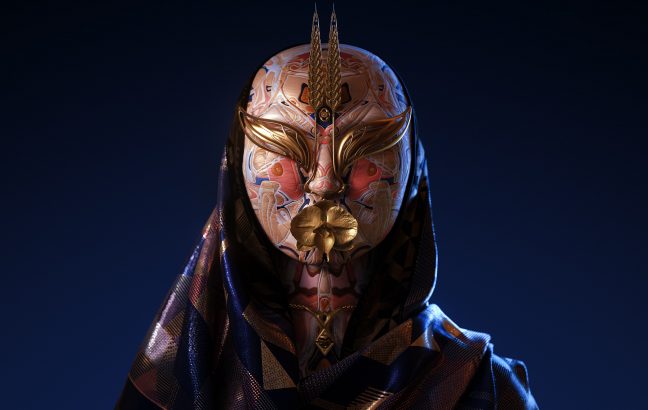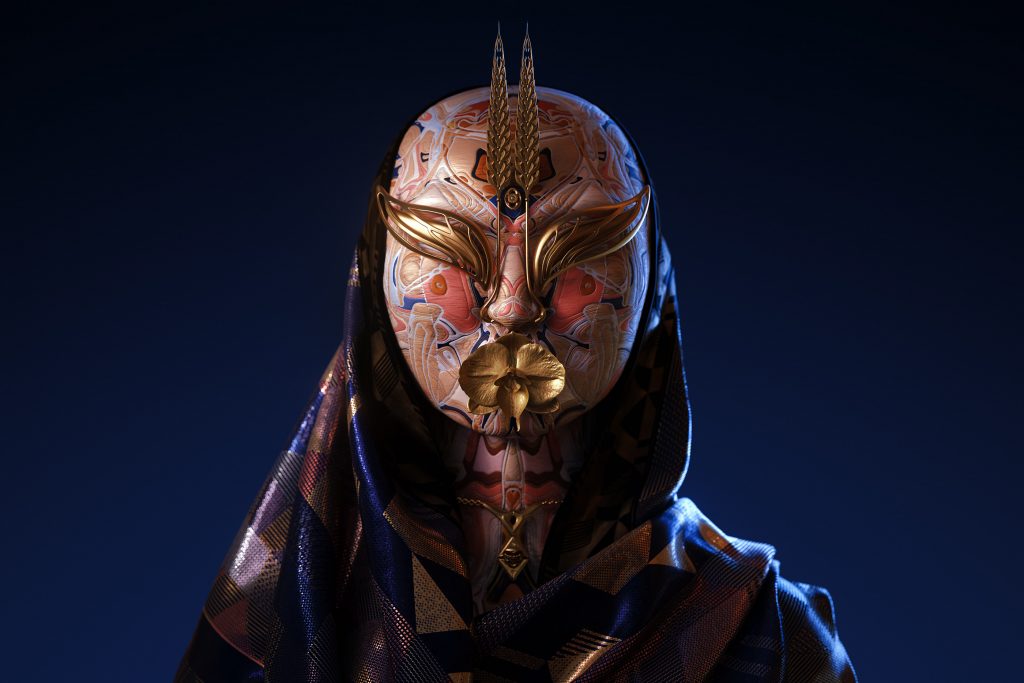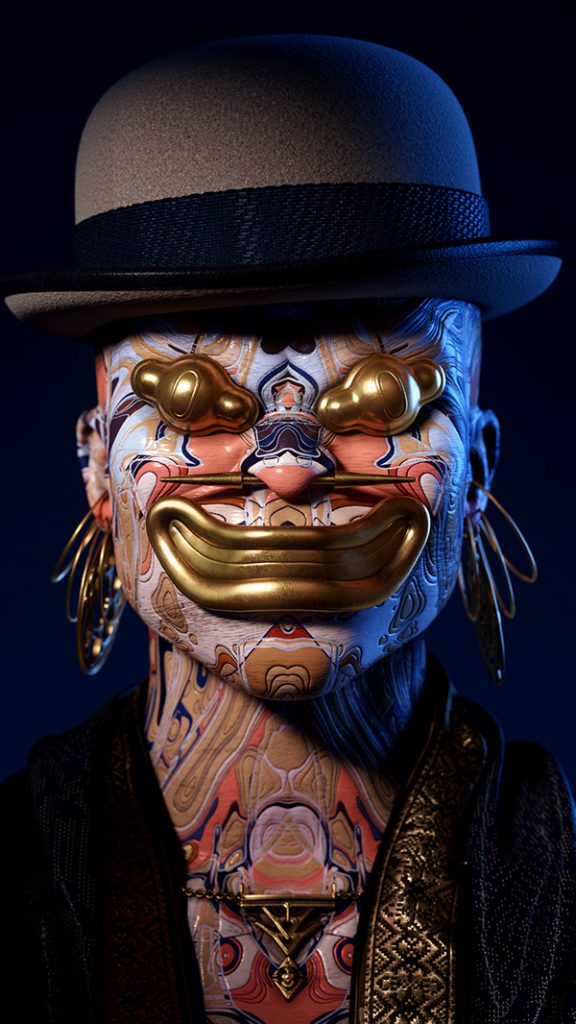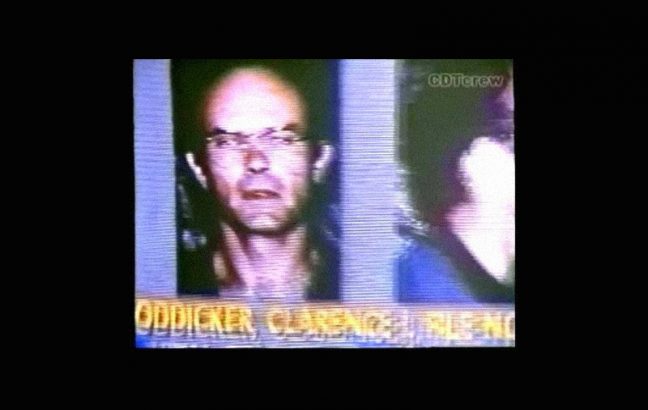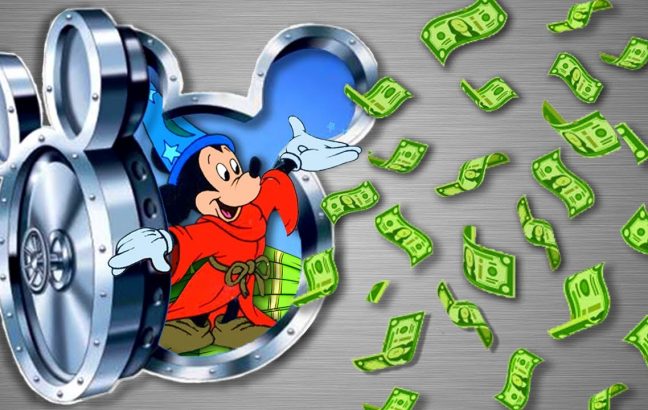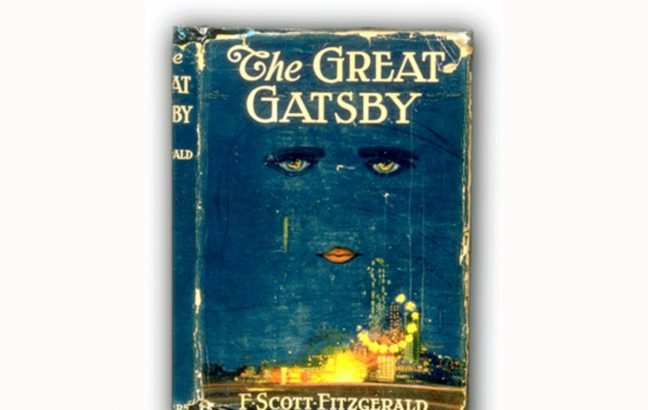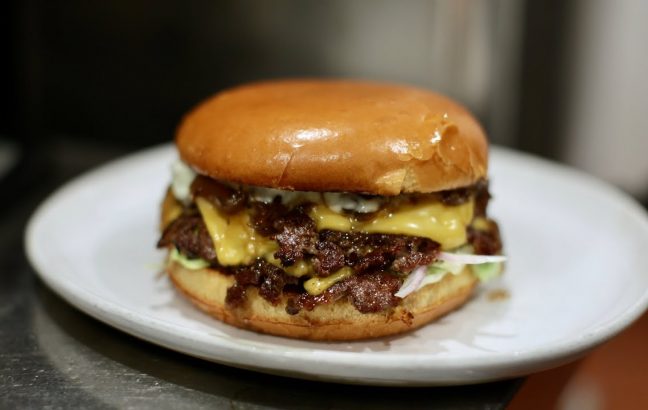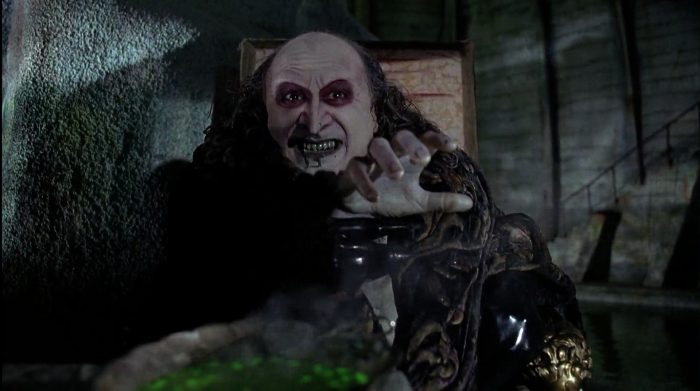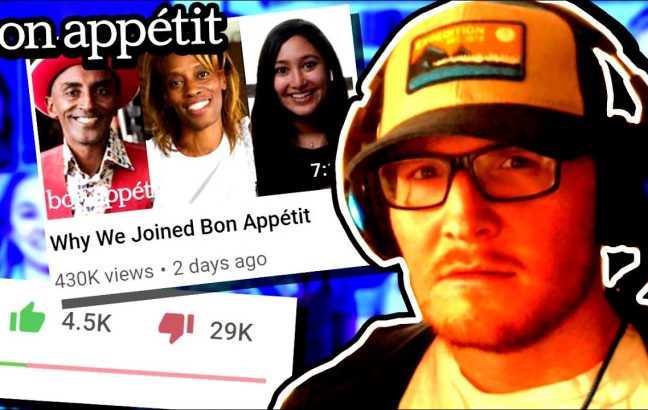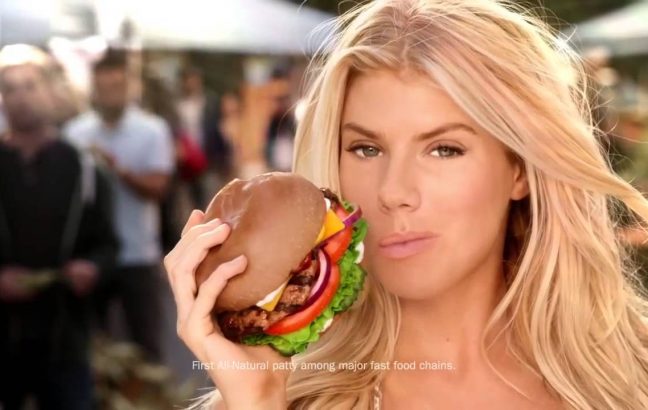It’s hard not to have a visceral reaction to Judas and The Black Messiah. The new trailer dropped earlier this year and as Daniel Kaluuya turns around in the first second of it, donning a beret and being viewed only through a keyhole, we wait with a big, held breath.
“Deputy Chairman Fred Hampton of the Illinois Chapter of the Black Panther Party”
The music drums through to intensify a legacy of a man many of us have never heard of. But his words blast the screen.
“I AM. A REVOLUTIONARY.”
He is pictured standing, invoking his audience’s emotion and reminding them that it is not him who is the key to their salvation, it’s each other. Black people, Latinx people and white people can be seen in the meeting hall where he is speaking. We know that the film will touch Fred Hampton’s time in the Black Panthers and the start of his Rainbow Coalition.
Many people may have come into contact with Fred Hampton for the first time. And if there’s anyone you should read about, it’s Fred Hampton. But if they weren’t going to teach us about Malcolm X in school, they sure as hell weren’t going to teach us about Fred Hampton.
So who was he?
Before we get into Fred Hampton, we have to understand the time he came up in, what he was walking into, and why he died so young. When the Chicago PD gunned him down, Fred instructed the FBI that in cold blood, as he lay sleeping next to his 8-month pregnant girlfriend, he was only 21 years old.
COINTELWHO?
Let’s talk about COINTELPRO.
COINTELPRO was a program by the FBI that targeted Black activists in the civil rights movement. Fred Hampton was many things but his death sparked the unmasking of a very concentrated, racially motivated eradication of Black revolutionaries that people, up until that point, could only chalk up to conspiracy theory. Black revolutionaries kept on being murdered and assassinated, and although everyone knew that it WAS the Feds, they couldn’t prove it until Fred came along.
The program was started in 1956 by J. Edgar Hoover. It aimed to infiltrate, discredit and surveilling and disrupting American political organizations. They targeted the Communist Party USA, anti-Vietnam war organizers, environmentalist and animal rights organizations, the American Indian Movement, The Young Lords and they even lightly monitored the Ku Klux Klan, and when I say lightly? I mean LIGHTLY.
But… the organizations that they thought were the most threat to national security in America? Black Nationalist groups and civil rights movements. But they had a real concentrated pressure and violence on the Black Panthers. They were billed the NUMBER ONE threat to National Security.
Here’s an excerpt from one of the classified documents:
Prevent the rise of a “Messiah” who could unify and electrify the militant Black nationalist movement. Malcolm X might have been such a “messiah”; he is the martyr of the movement today. Martin Luther King, Stokely Carmichael and Elijah Muhammed all aspire to this position. Elijah Muhammed is less of a threat due to his age. King could be a real contender for this position should he abandon his “obedience” to “white, liberal doctrines” (non-violence) and embrace Black Nationalism.
My Man Fred
Fred was the Black Messiah they were talking about. But we can’t talk about Fred unless we talk about his political ideology. Often we get wrapped up in singular speeches or moments. It happens with Martin’s “I have a dream” speech and Malcolm’s pilgrimage to Hajj. Fred gets wrapped up in the Black Panthers, naturally, but he was above all else, a revolutionary socialist.
He saw the most important factor in the fight for freedom. The real enemy was capitalism, fueled by white supremacy which permeated everyone’s struggles from poverty to xenophobia, islamophobia, sexism, anti-Blackness, anti-Semitism, transphobia and everything else. He knew that to be truly free, you had to mobilize everyone in the lower classes, to lead a revolution and that racism was a vehicle of distraction to keep us from tackling capitalism and the 1%. This was the key to making him one of the most feared Black revolutionaries of the time. That and the normal COINTELPRO tactics weren’t working.
Fred walked into the Black Panthers just before a power vacuum. Bob Brown stepped down because of all the tricks the FBI were doing. These included:
- Anonymous letters which contained lies, blackmail and threats to violence (Martin Luther King had been blackmailed to try and make him kill himself.)
- Illegal wiretaps.
- Forged documents.
- Informers
This is what Fred walked into. He’d been being watched since he was 18, anyway, but as he ascended to power through his charisma and socialist ideals, he became the FBI and Chicago PD’s biggest target. But there are things in his legacy that have changed the whole landscape of activism and socialism.
While Fred was Deputy Chairman, the Black Panthers started their Free Breakfast Program for children. Health Clinics and ambulance services were quickly started too. Although the Panther’s legacy is deeply rooted in the right to bear arms and create their own police force to protect Black and marginalized folx from the police, their programs strived to educate, feed and protect communities. When these nationwide programs gained success, they branched into services for blood banks and buses for relatives’ prisons. With all this going on, the Chicago chapter’s membership and credibility grew.
But Fred wasn’t stopping there. He thought turf wars between gangs were counter-productive towards real progress, so instead of leaving them to do their own thing, he tried to tackle it. He held meetings with rival gangs. They related to him because he was their age, and he could cut through to explain to them that the real enemies weren’t other gangs. It was the rich, running Chicago for their own means. This made a lot of sense to the gangs, especially the Young Lords. They said Fred helped them uplift their aims, and provide for their communities and they agreed that they didn’t want to lose their turf to developers. Fred helped “bring them out of right of the gang and start organizing the community” (José “Cha-Cha” Jiménez, leader of the Young Lords.).
This was essentially the heart of Fred’s revolutionary thinking; a broad coalition of all the oppressed that could rise against the rich capitalists that were gutting communities and keeping people in poverty. He knew he couldn’t stay mobilizing just Black people and Black Nationalists—he had to unite everyone. He saw the importance of strength in numbers. So as he began to change people’s thinking, he started crafting a broad coalition.
He reached out to the Brown Berets, the Young Patriots, the Red Guard Party and the Blackstone Rangers. He called them Rainbow Coalition. This in itself, was the only way towards a revolution, and the powers that be knew it. It would have changed history, but it put a target on Fred’s back, that sealed the fate of a life taken too soon.
The FBI was shaken to its core. In 3 short years, Hampton had mobilized a strong group living in poverty, and their gang affiliations meant they were done for a revolution, no matter how bloody. They couldn’t have it. They knew they’d found their Black Messiah and they knew he had to be stopped before he even started. Hoover had targeted Garvey in the 20s, and through the 60s, it was Malcolm, Martin and Fred. With Fred’s leadership skills and his universal communication, the usual tactics were trash. So Hoover had to come up with another plan, that was vicious.
Hoover originally contacted the Chicago Police who said hell no at first. Next on the list, Edward Hanrahan was an upcoming and coming democrat, and Cook County’s State Attorney. They came to an agreement, which probably had something to do with Hanrahan’s ambitions to take over from his mentor, Richard Daley, as mayor. Hanrahan put in an informer, William O’Neale.
Okay, let’s talk about William O’Neale.
He was a petty criminal who was recruited by the FBI extremely early on. He had been tracked as early as 1966. FBI agent Roy Martin Mitchell caught him driving a stolen car over the state line to Michigan. He was told these charges would be forgotten if he agreed to be an informant. So he did. He infiltrated the Black Panthers, and eventually ended up as their head of security. He had taken out leases for flats and had keys to nearly all of them, including Fred’s.
Unjustified murder
On December 4, 1969, Hanrahan chose 14 officers from his office and Neale put an X on the floor plan he had provided of Fred’s flat for the feds. The X was Fred’s bed. The night before, Fred had been teaching a class and Panthers had been at his flat, where O’Neale had drugged Fred’s drink and cooked food for the other Panthers. Some Panthers stayed, but O’Neale and a few others left.
At 4:20 AM, the police stormed the flat. They pounded on the door and the Guard, Mark Clark asked who was there. The first group of cops yelled “Tommy gun!”, and started to shoot. Clark was dead on impact. As a reflex, his trigger finger flinched and a bullet flew into the ceiling. This is the only shot the Black Panthers were able to shoot off. Now both teams of Feds were inside, and they continued shooting a spray of bullets at everyone in the flat.
Hampton’s pregnant girlfriend, Akua Njeri, laying next to him recalls the murder:
“I saw bullets coming from…the front of the apartment…Sparks of light. I had slid over on top of Chairman Fred. I don’t know what I was thinking, or what I was doing, I just moved over and covered his body,”
“He didn’t move. Just lifted his head up. It was like he was going in slow motion.”
“He never said a word, he never got up out the bed”
“[Someone] kept calling out, ‘Stop shooting! Stop shooting! We have a pregnant woman, a pregnant sister in here.’ At the time, I was 8 and a half, 9 months pregnant. Pigs [police] kept on shooting.”
When the shooting stopped, she said she slid over Fred’s body and put his house shoes on. She thought of all the things she needed to do to get her and her baby through a life or death night.
“Keep your hands up. Don’t stumble. Don’t fall. They will kill you and your baby.”
“There two lines of police, they were laughing. [They] grabbed me by the top of my head, slung me to the kitchen area.”
“Somebody said, ‘He’s barely alive, he’ll barely make it.’. . .The shooting started back again. The pigs said ‘he’s good and dead now.’”
Fred’s ghost
In the aftermath, several Black Panthers were severely wounded. They were all charged with aggravated assault and attempted murder, which was bullshit, so the charges were later dropped. Hampton, 4 months after his 21st birthday, and just as he had signed on to be the spokesman for the BPP Central Committee, had been slaughtered in his own bed.
While the raid had been swift, the coverup could be hailed as one of the most incompetent in history. They claimed they’d been in a shootout, but tests came back disproving it. The Panthers had only got off one shot from Clark, and that was obvious. Cops had fired at least 90 bullets for Clark’s one. They looked like murderous, callous, fools.
This wasn’t a victory, though. The coroner ruled “justifiable homicide”. Isn’t that some bullshit? The pigs went to my man’s flat when he was DRUGGED and shot up everyone in the thing and… justifiable homicide? Of a 21-year-old? Really? But if there’s one thing we know, the system is run by bitch boys who can’t take real opposition because the capitalist ideology is so weak. It barely stands up to criticism, or we wouldn’t lose so many of our revolutionaries. Their opposition wouldn’t be so callous, uncivilized and downright criminal.
After Fred’s death, the police’s incompetence was still thriving, and they unsealed his flat. The Panthers gave tours of it, showing the “bullet holes” that had been circled as their shots in the coverup, were actually nailheads. An understandable deep trauma of rage, anger and disdain swept across the Black community and the communities that had been aligned with Fred. When Hanharan tried to get re-elected, he was destroyed by his opponent and his career was done. Hoover always remained invisible, and his career was highly decorated in white circles whilst he was alive. But…
In 1971, 8 activists from Pennsylvania, set up a citizen’s commission to investigate the FBI and its dodgy dealings. One thing we have to remember about the FBI, CIA and all secret services around the world, they’re not for us, the people. They’re criminal sections of “intelligence” that work to uphold the murderous system we have now and instil fear and intimidation, so we all tow the line. They’re not for us; they’re for the criminals.
These absolute Gs, raided the Media, PA FBI office and stole a thousand documents. They found:
- The FBI informers reported every single meeting and action on the Black Panther Party, the Student Non-Violent Co-ordinating Committee and lots of others.
- They used informers to discredit and create distrust amongst the ranks of organizations.
- Hoover had a special bias towards Black revolutionaries and had a personal vendetta in destroying Black freedom movements.
Now, these were things that were widely known in the community; you just needed proof. Nonetheless, seeing it all on paper? Wow. So, there was an investigation and the start of a Senate Investigating community. By this time, the state tried to say that COINTELLPRO was dead. I call shit on this and think it’s still operating today, just more carefully, and Hoover escaped any fault, dying in 1971.
But for once, the state was up for conviction. Black Panthers members had long been defendants and the tables had turned. The families and survivors sued. The trial took place years after the case was filed and the case lasted 18 months. In 1977, the jury had deadlocked on a verdict and the judge threw out the case. In 1979, the Court of Appeals found that the Government had hidden documents relevant to the case and demanded a new trial.
Njeri wrote in her book “My Dance with Justice”: “It got to the point that the plaintiffs didn’t trust each other; we were sick of the lawyers and they were sick of us. . . .The survivors just wanted this nightmare to be over.” While there was anxiety happening with the filing survivors, the police department defendants were getting increasingly paranoid that damning evidence was going to be revealed and their lives would be over.
In the end, both sides agreed to a settlement of $1.83 million which is just over $4.9million today. Each government branch, City, County and Federal paid about a third.
So what happened to O’Neale? Well… He admitted he didn’t feel bad for his part in it. In a 19984 interview with the Tribune, he stated he chose his sides early and didn’t feel bad about his part. He’d slipped drugs into Fred’s drink, he’d given the layout of Fred’s flat to the feds and he’d willingly given the feds intel in his time infiltrating the Panthers. But he did seem genuinely horrified at the murders. Fred’s body was dragged out and a pool of blood followed the trail; that’s how nasty it was. In O’Neale’s head, he thought it was only going to be a raid, and his uncle, speaking in 1990, says he got caught up, in far too deep. What started as him trying to learn a charge, turned into being the accomplice and the facilitator of one of the most gruesome and influential assassinations on a Black revolutionary.
O’Neale had gone into the witness protection program, as word of his work started to spread and he feared for his life. On the eve of Martin Luther King Day in 1990, he spent the day with his uncle, a retired truck driver. His uncle said he kept spending a long time in the bathroom and tried to get out of the back window. His uncle pulled him back a few times, but eventually, O’Neale got loose, ran down the highway and was struck by a car. His death was ruled a suicide.
After coming back to Chicago secretly from California secretly around 1984, he’d tried a similar suicide attempt in 1989 but was only injured.
Bill Hampton, a brother of Fred said:
“The act (of being an informant,) he committed was unjust. He tried to live with it and couldn’t”
And that’s how arguably, one of the biggest traitors in Black revolutionary history lived his last day. He was always adamant that he felt no remorse but the feelings of being a pawn in a bigger plan that became overwhelming must have weighed on his mind, along with the gruesome crime scene photos afterwards.
A long legacy
There are a few things we can learn from Fred. Read about socialism. Recognize that struggle is international, and the pull of white supremacy and capitalism are inexplicably linked. If we are to have a socialist revolution, we must unite the underclasses together. Educate yourself. Learn to separate communism and socialism from the dictatorial regimes that have used it to gain popularity and as a vehicle to get egotistical, power-hungry people into power.
And don’t let romance pull away from the horror. He was 21 years old. He was gunned down sleeping, in his bedroom, with his 8-month pregnant girlfriend next to him. Severely outnumbered and drugged, he was a sitting duck, brutally murdered for being too powerful. He was a socialist revolutionary with a call to action for all the oppressed. He knew that racism was just a vehicle for capitalism to continue to exploit from the masses. He knew of the importance of alliances and the power of education and knowledge. Ultimately, the murder of a far too young Fred Hampton tells us a few things. He was too smart for them. He was on the right track. He may have been the closest one to spark a socialist revolution.
It pains me deeply to remember Fred. For how young he was. What he was, could have been and what he could have started. His death sparked just as much like his life, but that doesn’t make it any less unjust. His death went on to expose the unconstitutional and murderous operation of COINTELPRO, sparked the formation of an operation that would shine a light of the truth of all of the FBI’s shady workings, and went on to get at least a settlement out of all 3 stages of government. So even in death, he was ruffling feathers and inspiring changemakers to carry on organizing.
But above all, he reminds us that organizing outside of the system, in our communities is vital for a socialist revolution. We can’t depend on the government that is killing us to make a stand for us. We must do it on our own streets and with the same message, Fred Hampton shouted in his short, short life.
“We don’t think you fight fire with fire best; we think you fight fire with water best. We’re going to fight racism not with racism, but we’re going to fight with solidarity. We say we’re not going to fight capitalism with black capitalism, but we’re going to fight it with socialism. We’ve stood up and said we’re not going to fight reactionary pigs and reactionary state’s attorneys like this and reactionary state’s attorneys like Hanrahan with any other reactions on our part. We’re going to fight their reactions with all of us people getting together and having an international proletarian revolution.”
Long live Fred Hampton’s spirit.
The closest we ever came, to a true revolution.
